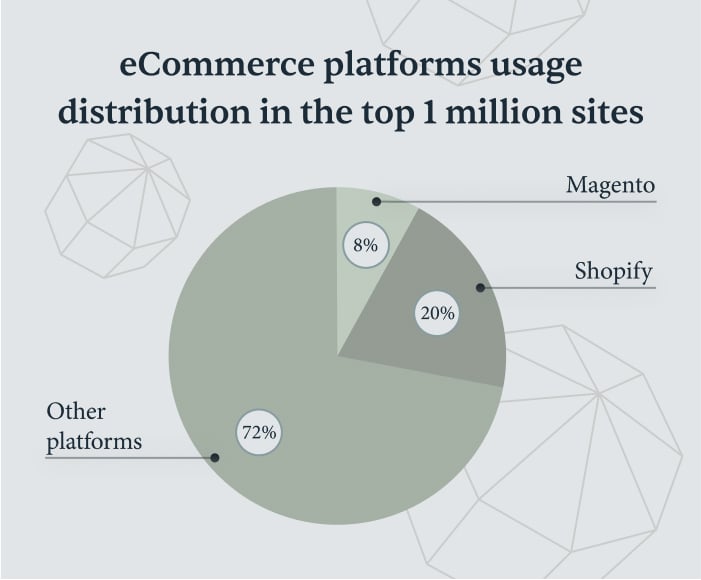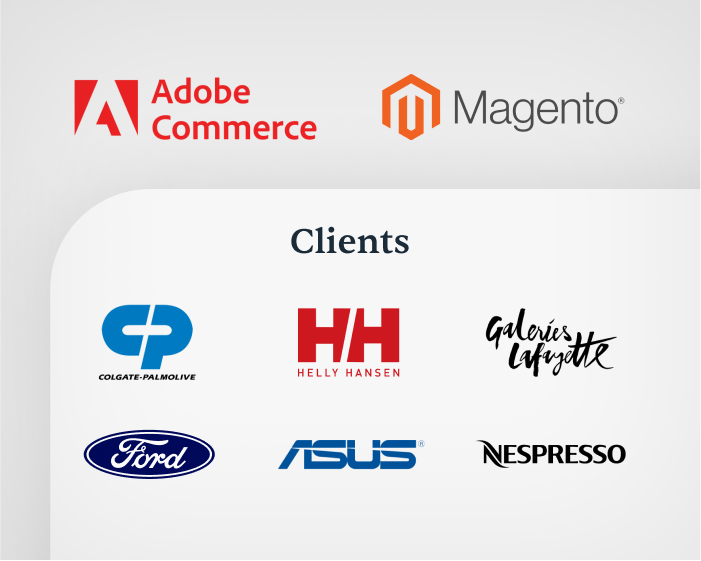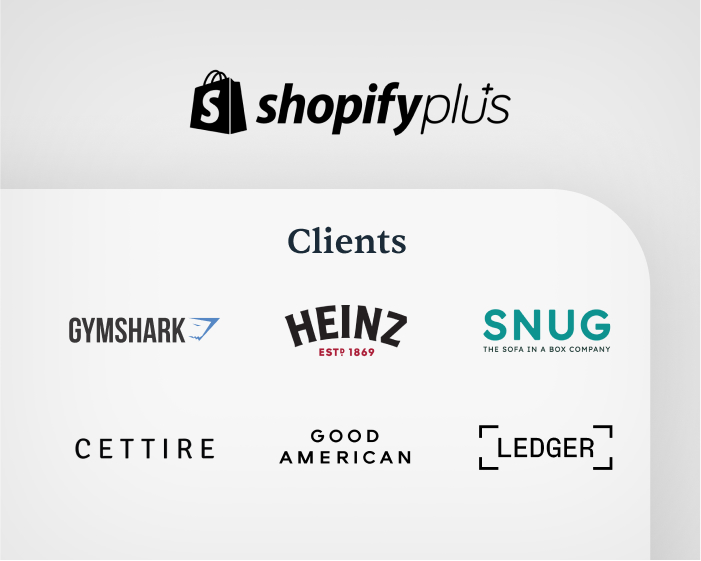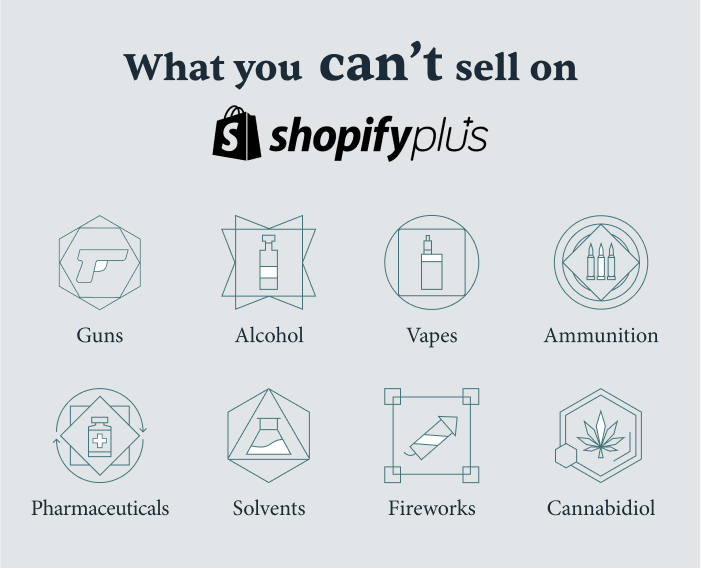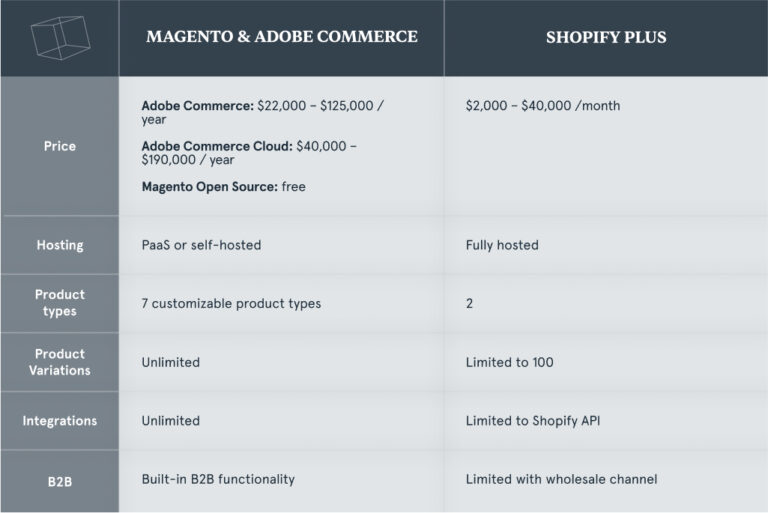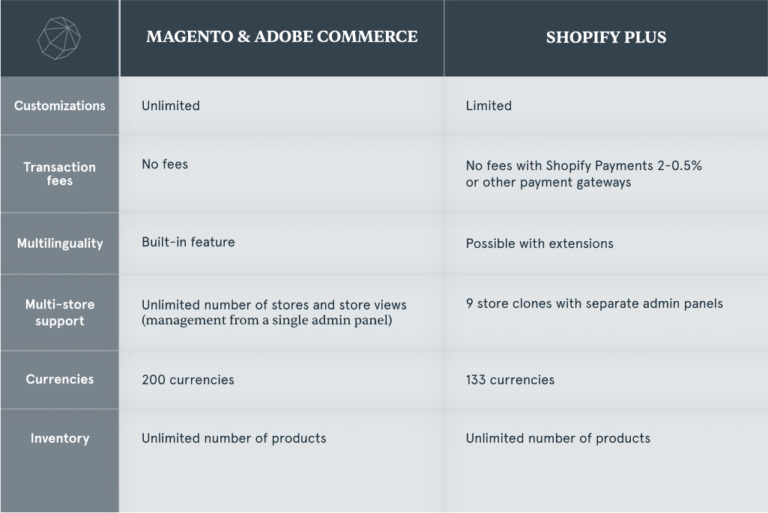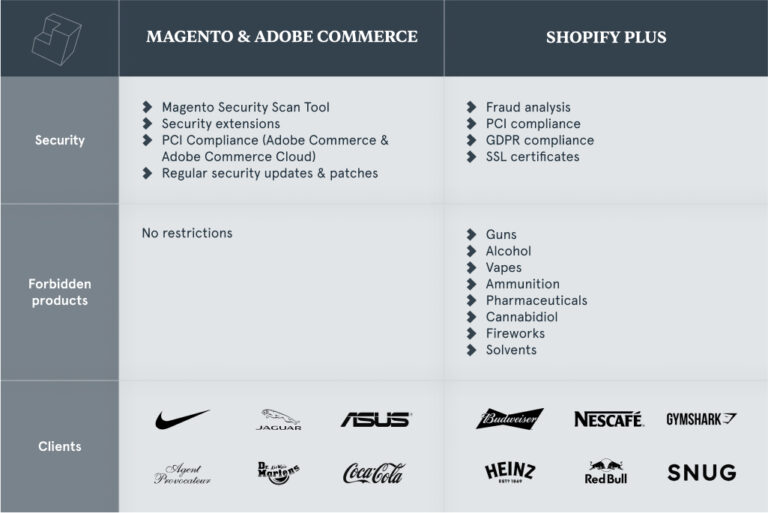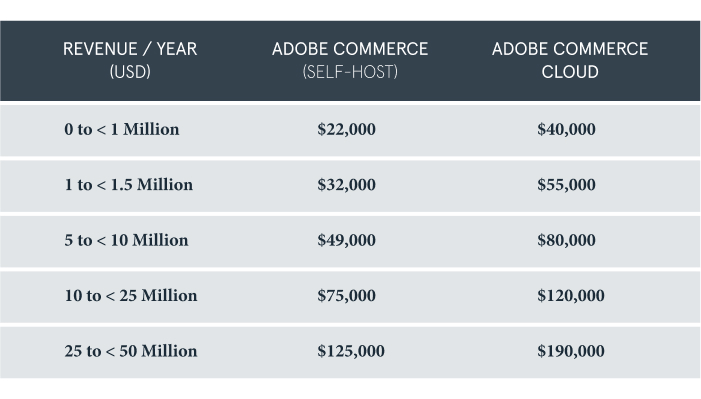So, you're planning to launch an eCommerce store? And looking for an eCommerce platform to run your business?
That’s fantastic news!
You're probably excited about what the future holds for your – new customers, an increase in sales and revenue, more possibilities for business growth...
But first, you need to do a thorough research of the eCommerce platforms on the market. The decision you make now will have a long-lasting impact on the business.
When looking for the best eCommerce platform, business owners and entrepreneurs need to take into consideration a variety of aspects related to their online eCommerce business.
Before you can make such a decision, you need to have a solid understanding of the requirements of your store, the range of products it will offer, the payment and delivery options it will offer to customers, and the overall experience you want customers to have with your eCommerce store.
Finding a solution that meets both your specific needs as a merchant and the preferences of your target audience is an essential part of selecting the appropriate platform.
If you’ve done your research already, Magento and Shopify would’ve made it to the list of platforms to look into.
But which one is best for you: Shopify or Magento?
In this article, we compare Shopify Plus vs Magento and shed light on their strengths and weaknesses. By the end of the article, you’ll know which one will be a perfect fit for your business.
Here’s a quick preview of what you’ll find in the article:
- What is Adobe Commerce?
- What is Shopify Plus?
- Shopify vs Magento features
- When to choose Magento vs Shopify
Let’s explore Adobe Commerce and Shopify Plus to choose the best solution for your business.
Magento vs Shopify: Platforms Overview
Shopify and Magento are two of the most popular eCommerce platforms on the market today, each powering thousands of online stores all over the world. Both Magento and Shopify offer distinctive eCommerce features.
When comparing Shopify vs Magento, both platforms are very different from one another in virtually every aspect, the major one being the businesses they are designed to serve.
On the one hand, the Magento platform is specifically catered for large enterprises, whereas the Shopify platform is designed for small and medium-sized businesses (SMBs) as well as customers who prioritize usability over functionality.
Let’s take a deeper look at the key differences between the two platforms.
What is Adobe Commerce?
Adobe Commerce, previously called Magento eCommerce, is a platform designed as a service and offers two versions. The first one is Adobe Commerce, an on-premise version. The other is Adobe Commerce Cloud, a hosted version. And in the argument of scalability between Magento vs Shopify, Adobe Commerce takes the win as it is designed to keep up with new innovations in technology and combine different capabilities for your business. It offers endless scalability and effective business tools to keep you ahead in the challenging world of digital commerce and expanding customer needs.
Adobe Commerce is catered to provide service to medium, large, and enterprise-level businesses. Notable brands that use the Adobe Commerce platform are Colgate Palmolive, Helly Hansen, Lafayette, Asus, and many others.
Additionally, there’s a free version offered, Magento Open Source. The primary difference between the Magento Open Source version and Adobe Commerce is that open source is available for free. Meanwhile, Adobe Commerce is the premium and paid-for version, which comes with a lot of advanced features that you’ll have to build for yourself in the Magento Open Source version.
Despite being free, not only small but medium, big, and enterprise companies are using Magento Open Source. Sometimes, businesses start with Magento Open Source and move to Adobe Commerce or Adobe Commerce Cloud when their business expands to new mediums.
What is Shopify Plus?
The Shopify business model revolves around becoming an all-in-one SaaS platform that does not require technical expertise to get your business off the ground. An eCommerce review of Shopify labeled it as a set of simplified eCommerce tools which offers a smooth pathway to scalability.
Shopify Plus is a combination of a simple payment plan, a user-friendly and accessible interface, reduced complexity, and minimal technical overhead. It is ideal for small-scale businesses because of its ready-to-go model. This model pushed the growth of Shopify stores to 200% during the pandemic, according to Genus AI research.
Some of the popular brands on Shopify Plus are Gymshark, Snug, Heinz, and Good American.
Adobe Commerce vs Shopify Plus: What the difference means for Businesses
As a SaaS platform, Shopify Plus has control over who and what can be sold using this eCommerce platform. For instance, Shopify forbids the sale of controversial goods, including guns, vapes, ammunition, and pharmaceuticals. This wasn’t the case until a few years ago and retailers were permitted to market such goods. After this drastic change in their policy, Shopify forced the merchants to switch to a different platform and rebuild their stores from scratch. Now, as a business owner, you keep wondering when Shopify will decide to alter the game’s rules the next time, or what products it will prohibit. This kind of uncertainty is dangerous for companies dealing with such products.
On the other hand, the approach used by Adobe Commerce is different and clear. As long as the products you’re selling are legal, you can perform your business activities through Adobe Commerce, including tobacco, ammunition, and other related goods. This makes things clear for businesses, and they don’t have to worry about switching platforms or shutting down their activities just because the platform powering their eCommerce stores has changed its policy.
Shopify Plus vs Magento: Key Differences
Shopify Plus and Magento are among the popular eCommerce Platforms. Every business has its own unique requirements and both these platforms offer their unique features to fulfill business needs.
Let’s start with the core difference between Shopify vs Magento. Every business is set apart by its approach. While some businesses might invest heavily in the technical department, others would rather use those resources in other aspects of the business. These varied business needs are what most business decisions are based upon.
Shopify vs Magento differences fulfills varied needs of the industry. Shopify Plus is an ideal platform for small to mid-sized businesses as it offers a fast technical learning curve. However, for businesses that have ample technical expertise at their disposal and are adamant to cope with the complexity of the platform, Magento provides its customers a platform to create something unique and equipped with all the features which are demanded by the business venture itself.
Retailers, which want superior development power and customization opportunities, look at Magento as their go-to option. For those who want to stick with a simplified and streamlined platform, they should opt for Shopify Plus, as it caters to exactly what they might be on the lookout for. The debate about Magento enterprise vs Shopify Plus is an old one, but there is still no conclusive answer as to which one is better as it entirely depends on your business requirements.
Let’s take a look at some key differences between the platforms.
Are you looking for Magento developers to start your own platform? Check out our detailed guide on Magento developers: A Guide to Finding Magento Developers
Magento vs Shopify Costs
Let’s look at Shopify versus Magento costs. Magento and Shopify Plus both have a price tag attached to them, and you can easily get confused when trying to figure them out.
Here is a complete breakdown of the costs that you might have to incur.
Shopify Plus Pricing
- Platform Fees: The Shopify Plus price point starts at $2,000. While the flat rate may seem a huge plus point, it is important to understand that the charges will turn into a revenue-based model after you secure $800,000 per month in sales. This means that you will have to pay 0.25% of your monthly revenue to Shopify Plus once you exceed the aforementioned sales quota. However, the percentage will not cross $40,000 either.
- Credit Card Processing Fees: The Shopify processing fee differs based on the payment method you opt for. The platform has its payment provider by the name of Shopify Payments, whereas various other third-party payment providers are also linked with the platform.
Since Shopify Payments are part of the platform’s services, you get good value when it comes to transactions; you will be charged 2.15% along with $0.30 on every transaction made by domestic Visa and Mastercard. These rates can be negotiated based on your sales volume under Shopify’s “good merchant history” rule.
For AMEX and international cards, be ready to pay an additional 1% fee. When it comes to third-party payment gateways like PayPal, 2Checkout, Skrill, etc., you will have to pay 0.15% extra.
- Hosting: Once you have paid the money to Shopify, they will incorporate the charges for hosting within, and you will not have to whip out extra cash for the hosting of your eCommerce store. The hosting, networking, and load testing are entirely under Shopify’s authority.
- Development Costs: Speaking solely about numbers, in theory, Shopify themes will typically cost in the range of $0 to $180; while these themes might be popular but they might lack certain key features that you might require solely based on your business. You can test out the themes first to get your eCommerce business started and then transition into looking for customized solutions which can vary between $10,000 up to $250,000. Don’t let these numbers fool you, the cost increases based on the complexity and features of your store. If you want to keep the cost down-low, then you need to handpick all the services and how you want the store to be set up.
- Additional Shopify-specific Cost: The basic cost analysis provided above is everything you typically need to get started. However, there might be additional charges that you need to be wary of as your business expands.
- Third-Party Applications: Shopify has an abundance of applications that you can integrate within your business to enhance the results. For instance, you can opt for cart-related applications which generate an automated email to the customers who added products to their carts but did not end up confirming their orders. Through these apps, you can significantly amp up your store revenue. While these apps provide a tangible upgrade to your business, they come at a cost that is often monthly. You will roughly have to invest $1,000 monthly on Shopify apps, but you can reduce the cost by handpicking the services you want to sign up for.
- Apps for International Stores: The majority of the application companies do negotiate the terms and conditions, which is something many people are unaware of. But Shopify does charge for apps on a per-store basis, which can eventually increase the costs a lot.
Magento Pricing
There are a few ways you can use Magento as this platform is available in three options:
- Magento Open Source
- Adobe Commerce
- Adobe Commerce Cloud
Let’s start with Magento Open Source, this particular version is available for free and offers such features as high scalability and customizability. While it’s free, you’ll need to pay for the design and development services. You can cut the starting point by choosing a ready-to-use theme for your store and limiting the number of customizations.
Now let’s get to the paid versions. Adobe Commerce is the first option. It’s a self-hosted platform, which means you will have to find a hosting provider yourself. The cost of an Adobe Commerce license starts at around $22,000 per year.
The last one is Adobe Commerce Cloud, previously known as Magento Commerce Cloud. This is the hosted version of the platform, meaning hosting will be provided to you.
Both Adobe Commerce and Adobe Commerce Cloud provide the best benefits of open-source platforms – unlimited customization capabilities and scalability. You can do anything with these two versions, add new features, customize existing ones, expand functionality with modules, and much more.
Here is a rough breakdown of Magento pricing.
- Hosting: One of the biggest differences between both platforms, Magento vs Shopify is that the hosting service is not included in Magento’s platform charge. So, for the free version, Magento Open Source and Adobe Commerce, the self-hosted version of the platform, businesses can use any hosting they want. You can opt for Adobe Commerce Cloud and Adobe will take care of the hosting, which starts from anywhere between $500 per month and can go as high as $10,000+. The hosting costs may vary for everyone, as they depend on the size of your business, the number of store views, product catalog, customizations, third-party integrations and so on.
- Development Cost: The development cost between Magento vs Shopify is an important consideration. The average Magento OpenSource website costs between $100,000 to $500,000; the upper limit is stated to give a reference while in reality, the costs can also surpass the higher limit. While it is significantly more expensive than Shopify Plus, however, it offers a lot more scalability in terms of developing custom features. With Magento platforms, businesses get an added benefit as they can choose to start with Magento Open Source and pay for development services only. Later if they need to expand, they can always migrate to Adobe Commerce or Adobe Commerce Cloud.
Flexibility & Scalability
This is probably where both Magento Open Source and Adobe Commerce have a clear advantage over Shopify Plus and the contest is nowhere close. The large-scale merchants and stores need several different product variants which might consist of distinct colors, sizes, or types. To satisfy these demands, Adobe Commerce offers store owners an unlimited variant option. Although the option is there, you still should not exceed 2,500 records per product.
For Shopify Plus users, you have a strict restriction of 100 variants and three options when it comes to the specific configurable product. While it enables store owners to quickly list their products and add different variants, it poses an absolute hurdle for the growth of high-scope stores on the platform. An alternative to this problem would be to use third-party custom apps such as Advanced Product Option by MageWorx and Infinite Options by ShopPad Inc. However, you will still face limitations that you wouldn’t with Magento otherwise.
This is where Magento takes the lead in the Magento vs Shopify debate. Since Magento is an open-source platform, businesses can do anything with it. They are not limited to the functionality provided by the companies. They can fully customize existing features according to their needs. Additionally, they can even add new features developed by themselves from scratch. This kind of flexibility and customization allows businesses to react to their customer’s feedback and create a customized customer experience.
Multi-store Management
Merchants can now create multiple stores on both Shopify Plus and Adobe Commerce.
Shopify Plus offers up to 9 additional storefronts from various locations on top of the main store. This means that you will be able to manage all your businesses from a single dashboard that contains all the analytics, employee accounts, user permissions, and automation tools. The only thing that you need to be mindful of is that each store will be charged based on their GMV. Magento, on the other hand, does not limit you to a specific number of additional stores. You can build various websites for unique brands or even multiple brands. The unique thing Magento offers is the ability to share product catalogs across different websites, which is essential for store owners with large catalogs.
Shopify Plus, like Shopify, also enables the store owners to track their inventory and fulfill all the orders efficiently. The maximum number of locations you can have with Shopify Plus is limited to 20.
Adobe Commerce, on the other hand, enables you to control an infinite number of storefronts from a single admin panel. Inventory can be synchronized between stores, and product catalogs can be shared among several websites, stores, and store views. The platform provides complete freedom to implement changes at various levels.
Additionally, you can choose whether to manage attributes globally or locally. A global element like “product name” can be assigned by merchants, while local attributes like “pricing” or “product description” can be defined. They now have more power over inventory management as a result.
Furthermore, Adobe Commerce allows you to set up your own stocks, sources, salable quantity, performance, and partial shipments as well. In addition to this, Magento also has its very own Source Selection Algorithm, which is utilized to optimize the operations of your inventory.
With all of these features together, Adobe Commerce is the platform of choice for global, multi-brand, B2B, and B2C retailers. From a single admin interface, you can manage dozens or even hundreds of stores all around the world and tailor them to your needs.
All in all, Adobe Commerce clearly has the upper hand when it comes to Shopify Plus vs Magento multi-store management. Irrespective of how big your brand gets, you can keep on adding and expanding without any limitations from Adobe.
Merchandising
The act of promoting the sales of goods is known as merchandising and it plays a huge role in the development of a company’s brand and its overall growth in the long term. And businesses are coming up with new innovative ways to boost sales. Let us go through the differences between Shopify Plus vs Magento.
Without a shadow of a doubt, this is also where Shopify vs Magento 2 debate heats up as Adobe offers seven different standard product types on both Adobe Commerce and Magento Open Source Commerce:
- Simple products
- Configurable products
- Bundled products
- Downloaded products
- Virtual products
- Grouped products
- Gift cards
Whether you are using Adobe Commerce edition or Magento Open Source, it is a simple task to create rules to set up related products which you want to display. This essentially reduces the manual work, which is especially useful for sellers with large categories. In addition, Magento also offers visual merchandising; it determines which product should appear in the category listings. Through this, you can drag, drop, and set position values to alter the position of the product.
On the other hand, when talking about Shopify vs Magento 2 specifically, Shopify does not offer multiple product types. It only offers the equivalent of simple and configurable products. The same level of functionality can be achieved through the use of customizations and third-party applications. You would also need to consider how you want the product setup to work from a discounting and catalog management perspective, particularly with bundles.
Shopify Plus offers some facilities to merchandise the products. The users have the option to choose from base ordering options and also manually order products in their collection. Additionally, you can also set a base order and then switch it to manual and re-order which has typically proven to be a good model in terms of customer satisfaction
The options for Shopify’s base ordering are:
- Best selling
- Product name (A-Z and Z-A)
- Price (high-low and low-high)
- Newest and oldest
Shopify also offers visual merchandising through third-party apps and extensions.
Support & Help
When it comes to providing support, the battle of Shopify Plus vs Magento has no clear winner as both function quite differently. Where Shopify helps customers save money that would have been spent on development otherwise. Magento has online community forums as well as Magento development companies to help you whenever you want, although it might cost a little bit.
Shopify customers have access to a direct merchant success manager 24/7 and the Shopify Plus support staff is genuinely supportive. These technical issues are all dealt with free of cost and you can raise any query regarding technical issues, marketing, or even conversion rate optimization.
Magento, on the other hand, as an open-source platform, has developed a huge community over the years. The community consists of hundreds of thousands of developers from all over the world who share their knowledge online. If you have a question, there is probably an answer online. Also, there is Adobe Commerce DevDocs, where you can find a ton of useful guides.
Moreover, if you work with a Magento development company, you won’t need to worry about any problems. The agency will take care of any issues that might arise. This kind of assistance and knowledge sharing is the main difference when it comes to Magento vs Shopify Plus.
Not sure which eCommerce platform will be ideal for your new business?
Check out our guide on eCommerce platforms to help you decide: BigCommerce vs Shopify vs Magento: the Best Choice in 2022
B2B features
When it comes to comparing B2B features of Shopify vs Adobe Commerce, the latter is your clear winner. And here is why.
Shopify Plus offers the following B2B features
- Flexible payment options
- Order management and re-ordering
- Custom pricing for customers
- Tiered pricing and catalogs for groups and individuals
- Integration with ERP, OMS, and CRM
Additionally, You can also set up a wholesale channel to sell to customers who want to buy in bulk. Merchants can offer fixed, percentage off, or volume-based pricing, set up minimum and maximum quantity increments, and apply minimum purchases storewide or per customer.
Now let’s see why Adobe Commerce is heavily favored.
For starters, Adobe Commerce serves all kinds of eCommerce businesses – B2C, B2B, and D2C. It provides all the required functionality out of the box. The list of B2B-specific features is extensive.
- You can create different customer groups
- Design different discounts and catalogs
- Set up shopping priorities
- You can also create a company account
- Set up credit limits
- Assign budgets to users and companies
- Assign roles to users
- Use tiered pricing, and much more
The special thing about Adobe Commerce is that it will fit even the most unique businesses. Because of its open-source code, not only can you customize all features provided out of the box, it even allows you to create new ones based on your business needs.
In conclusion, Shopify Plus is more B2C-focused. Its B2B functionality only suits eCommerce businesses with very limited requirements. However, if you work in B2B or across B2B, B2C and D2C models at the same time, Adobe Commerce is better suited to support such ambitious companies.
Adobe Commerce vs Shopify Plus: Which One to Choose
So, now you know the key differences between Adobe Commerce vs Shopify Plus.
With Shopify Plus’ low upfront and operational costs, merchant-first approach, and little technical and maintenance overhead, it is the ideal all-in-one package for small to medium businesses and those just starting up.
On the contrary, Magento and Adobe Commerce offer a wide range of services and features but at the cost of employing Magento developers. At the same time, you get unlimited customization capabilities, scalability, and extensibility. Adobe Commerce allows you to build a store of your dreams to serve all business requirements.
The significant investment required to start on Adobe Commerce might turn you away, but you can always get started with the free Magento Open Source platform and make a transaction to Adobe Commerce and Adobe Commerce Cloud whenever you feel ready for it.
Additionally, we can assist you in selecting the version of Adobe that is perfect for your company under the most favorable terms.
You can always contact us to talk about your online store. We’ll be glad to impart our experience and assist you in selecting a platform.


